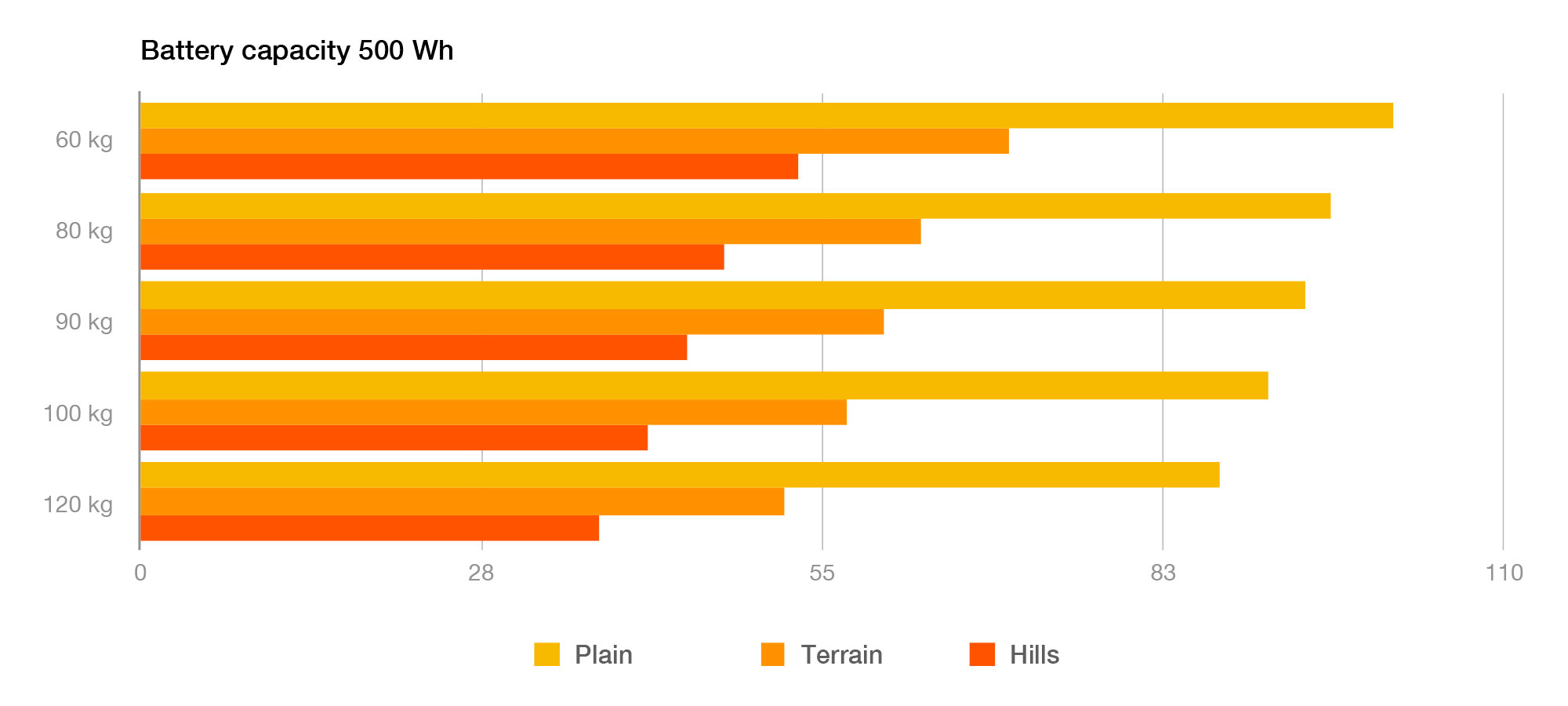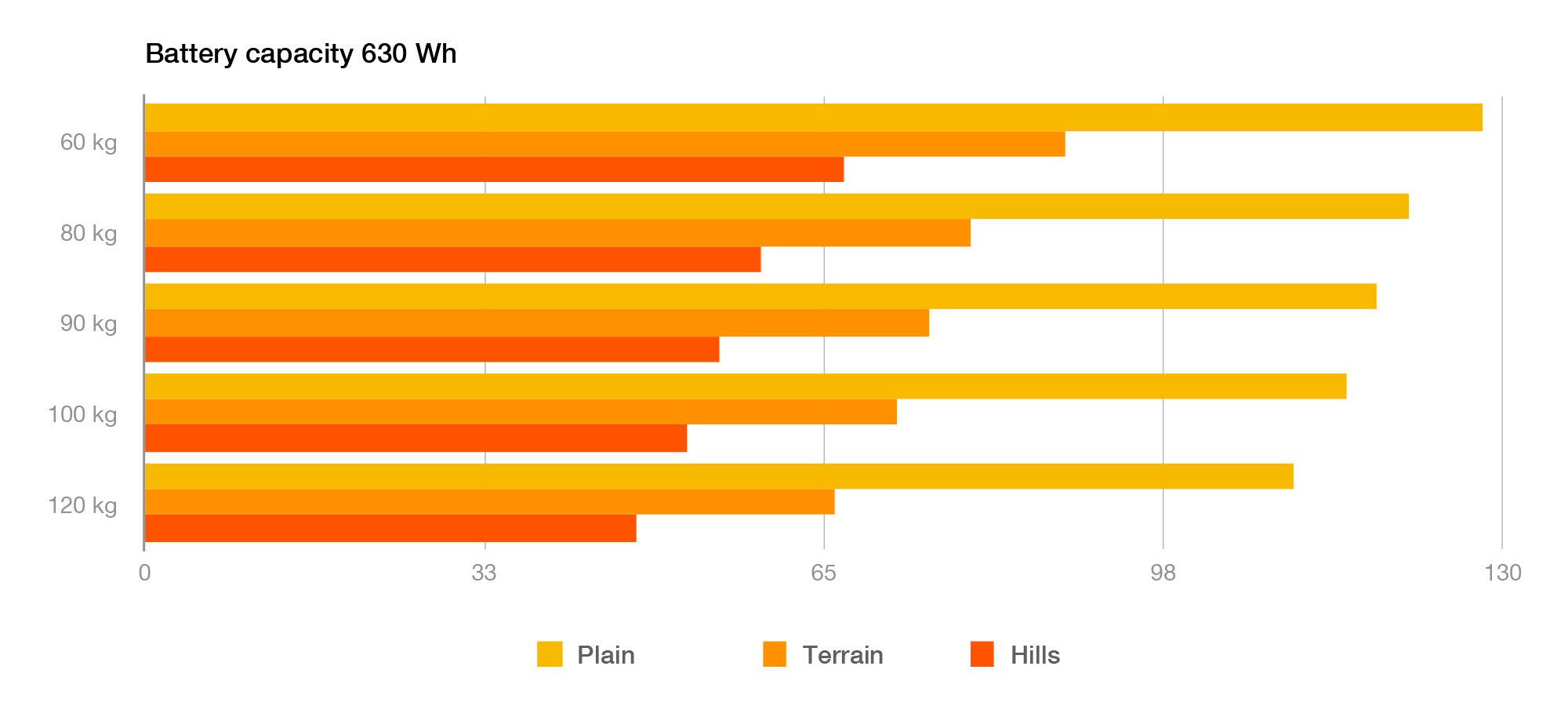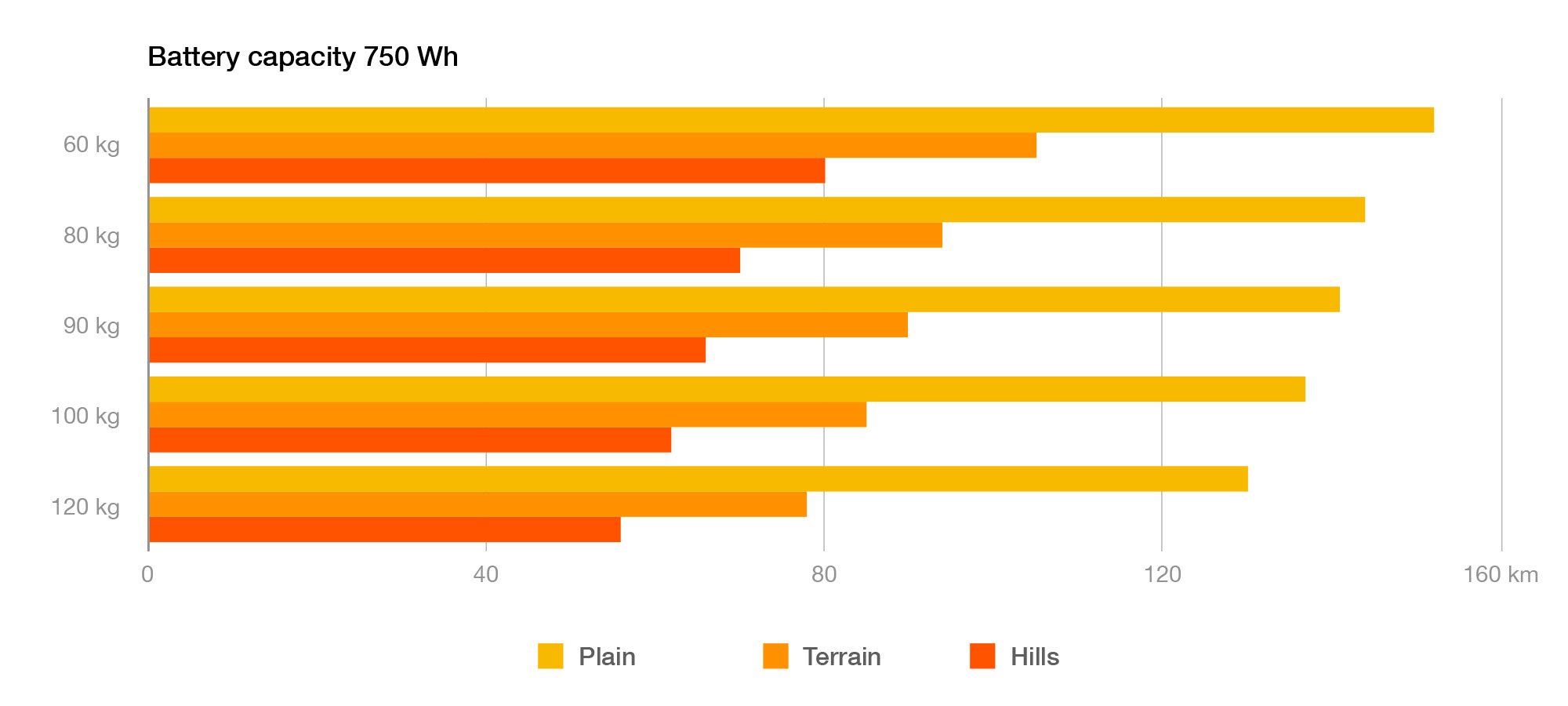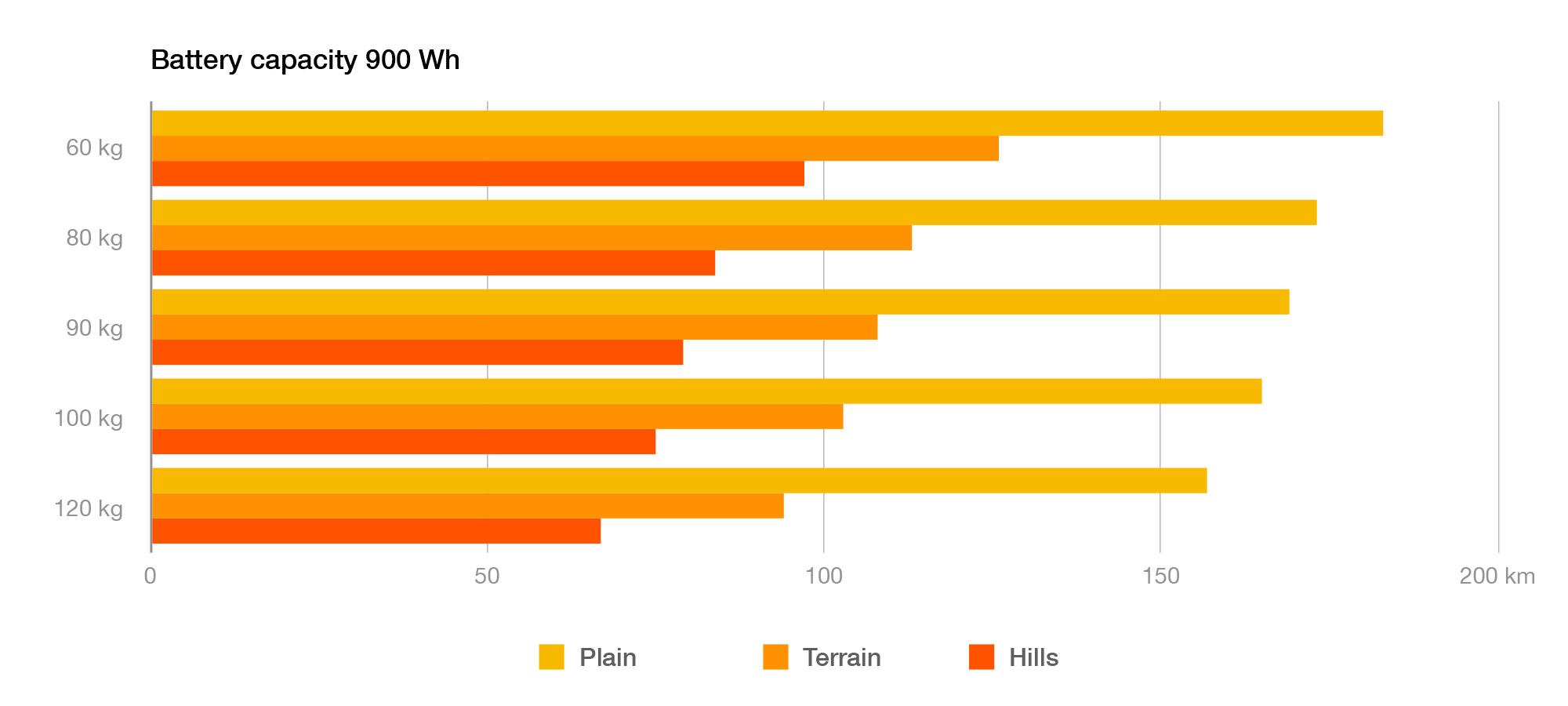All about the range of an e-bike

One of the most discussed topics in relation to electric bikes is their range, i.e. the distance travelled, or the time during which the electric motor consumes the energy stored in the battery and provides the rider with assistance when pedalling.
In contrast to other electric vehicles (e-scooters, e-scooters and motorcycles or e-bikes), the e-bike is equipped with a mechanical transmission and thus its range can be said to be essentially unlimited, just like that of a mechanical bicycle, and is bound only by the physical disposition of the rider. The range values for electric vehicles must be given by the manufacturers on the basis of the mandatory WLTP (Worldwide Harmonised Light Vehicles Test Procedures) methodology. There is no methodology for electric bike manufacturers. It should be remembered that an electric car weighing 1500- 2500 kg carries a rider and a load that is only 10% of its weight. Therefore, the weight of the rider and load is negligible for the total range.
- With an electric bike, the rider's weight is a key factor that affects its range. The heavier the rider and the load, the more energy the e-bike motor has to consume for an asitive ride. This means that the heavier the rider, the less the overall range of the e-bike will be.
- Another factor that significantly affects the range of an e-bike is the elevation profile of the route. If you ride on flat ground, the e-bike will need less energy than going uphill, because here the e-bike has to cope with gravity and will use more energy to move forward. On the downhill, on the other hand, the e-bike will use kinetic energy and consume no battery power.
- In addition to these two things, other factors also affect the range of an e-bike. The direction and strength of the wind is important. The reason why the Netherlands has seen such a rapid development of e-bikes (currently more than 80% of all bikes) may not be obvious at first glance, as there are no hills. Unlike the Czech Republic, the weather conditions are different and the wind blows strongly from the sea for most of the year.
- Another attribute that affects the range is the driving mode, i.e. the choice of the level of electric motor assistance. Very often, we encounter drivers who "save capacity" by choosing the lowest level of assistance or turning it off. Of course, they increase their range, but the question is whether they also enjoy their ride enough. A better strategy is to set the assistance to a comfortable ride and let the e-bike recharge during a refreshment stop. Thanks to the dense network of e-bike charging stations in our country, this is no longer a problem.
- Of course, the road surface also has an effect on the distance travelled - when driving on a predominantly asphalt road, the range will naturally be higher than on gravel or mountain terrain. An outside temperature below 10 degrees Celsius will then reduce the available battery capacity by about 10%.
- Finally, the rider's experience with cycling should also be mentioned. Efficient shifting and use of the derailleur, sufficiently inflated full tires or even properly set suspension can save some battery percentage and have a better riding experience.
Let's take some values:
Modern (especially off-road and trekking) e-bikes have a battery with a capacity of typically 500 to 900Wh - with a theoretical claimed range of 50-150 km. However, on a hilly trail and with a heavier rider, the range of the same e-bike can drop to 30-50 km.
An e-bike with a 500 Wh battery will have a range of approximately 60 km under optimal conditions with a fully charged battery and a rider weighing 80 kg on slightly undulating terrain if the rider is riding at maximum assist power (i.e. Turbo level for Bosch, Level 5 for Bafang, etc.). Here we are talking about an average consumption of about 8Wh/km.




To calculate the exact range for your weight and rout type, use our calculator:
[dojezd-120-[{"watth":"400"}, {"watth":"430"}, {"watth":"470"}, {"watth":"500"}, {"watth":"540"}, {"watth":"630"}, {"watth":"750"}, {"watth":"900"}]]
In conclusion, the range of an e-bike is not simply a given number, but depends on many factors. The most important factors are the weight of the rider and the height profile of the route. Because e-bikes are used in different conditions and situations, it is impossible to accurately determine the range of an e-bike without knowing these factors. It is also important to consider that the range of an e-bike will change over time as the battery loses its capacity with age and use. The average life of an e-bike battery is 5 to 8 years. We recommend replacing or refurbishing the battery after approximately 25,000 km.

